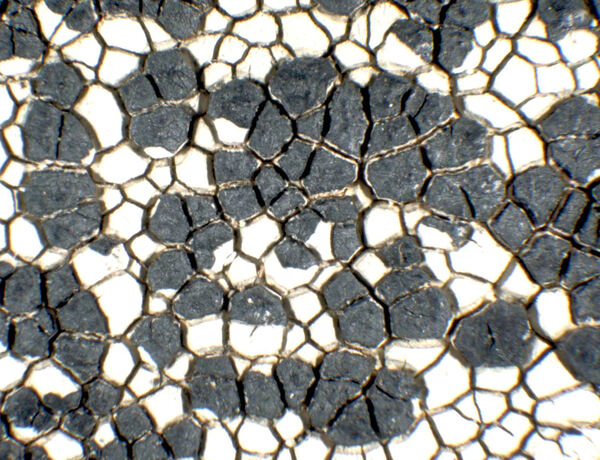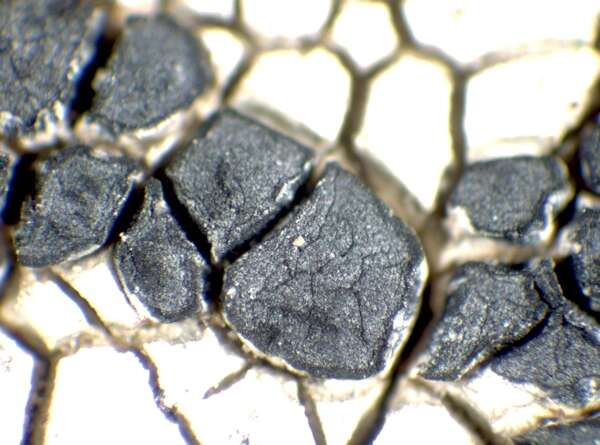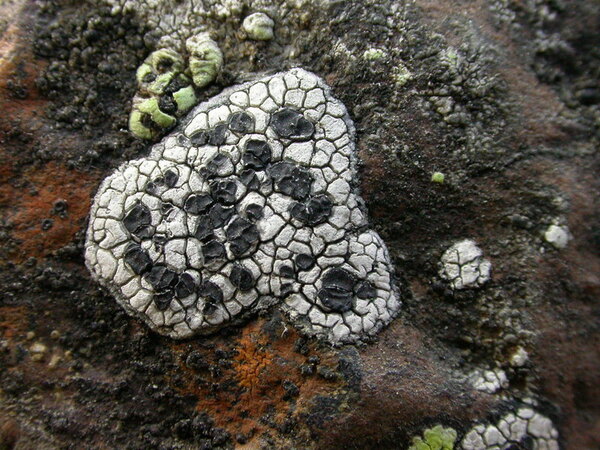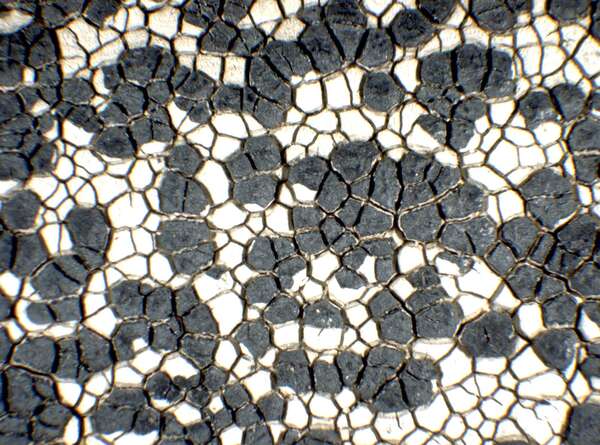Lecidea tessellata Flörke var. tessellata
Deutsch. Lich.: 64, 1819.
Synonyms: Lecidea cyanea sensu Th. Fr. non (Ach.) Röhl.; Lecidea homalodes Nyl.; Lecidea magna Lynge; Lecidea occidentalis Lynge; Lecidea spilota Fr.; Lecidea spilota var. intricata (Hepp) Anzi?; Lecidella spilota (Fr.) Körb.
Distribution: N - Frl, Ven, TAA (Nascimbene & al. 2022), Lomb, Piem (Isocrono & al. 2004, Favero-Longo & al. 2006b), VA (Piervittori & Isocrono 1999, Isocrono & al. 2008, Favero-Longo & Piervittori 2009, Matteucci & al. 2015c), Emil (Dalle Vedove & al. 2002, Fariselli & al. 2020), Lig (TSB 33420). C - Tosc. S - Si.
Description: Thallus crustose, episubstratic, greyish white to pale bluish grey, sometimes spottily rust-red on iron-containing rocks, 0.2-2(-3) mm thick, thicker in central parts, forming small patches, often delimited by a dark prothallus, finely rimose-areolate, the areoles contiguous, flat to slightly convex. Cortex 10-17 µm thick; medulla thick, white, I+ deep blue. Apothecia lecideine, black, adpressed, mostly developed between the areoles, usually clustered, rounded to usually angular in outline, 0.3-2(-3) mm across, with a black, epruinose or weakly pruinose, flat to very slightly convex disc and a thin, often soon excluded proper margin. Proper exciple poorly developed, with a brownish rim, colourless within; epithecium olive-brown, grey or green-black, 10-15 µm high; hymenium colourless or pale green, 40-80 µm high, I+ blue; paraphyses simple or rarely sparingly branched, usually not anastomosing, 1.8-2.7 µm thick at mid-level, the apical cell 3.5-6 µm wide; hypothecium colourless to pale brown. Asci 8-spored, clavate, Lecidea-type. Ascospores 1-celled, hyaline, ellipsoid to broadly ellipsoid, (6-)7.5-11(-13) x 3.5-7 µm, not halonate, rather thick-walled. Pycnidia semi-immersed, black, the ostiolar region often elongate and almost lirelliform. Conidia bacilliform, 7-19 x 1-1.5 µm. Photobiont chlorococcoid. Spot tests: thallus K-, C-, KC-, P-. Chemistry: confluentic acid (major), 2’-0-methylperlatolic acid. Note: a cool-temperate to arctic-alpine, circumpolar species (Hertel 2006) found on hard, often mineral-rich siliceous rocks in upland areas, which sometimes starts the life-cycle as a parasite of other crustose lichens, especially Aspicilia spp.; common in the Alps, where it reaches the nival belt, much rarer in the mountains of Southern Italy.
Growth form: Crustose
Substrata: rocks
Photobiont: green algae other than Trentepohlia
Reproductive strategy: mainly sexual
paras crustose lichens
Commonnes-rarity: (info)
Alpine belt: extremely common
Subalpine belt: common
Oromediterranean belt: very rare
Montane belt: rare
Submediterranean belt: absent
Padanian area: absent
Humid submediterranean belt: absent
Humid mediterranean belt: absent
Dry mediterranean belt: absent
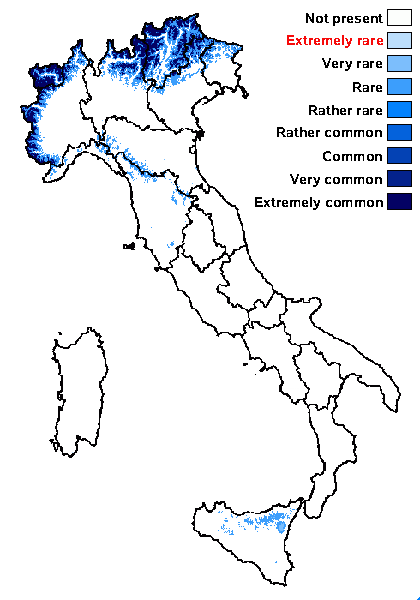
Predictive model
Herbarium samples
Growth form: Crustose
Substrata: rocks
Photobiont: green algae other than Trentepohlia
Reproductive strategy: mainly sexual
paras crustose lichens
Commonnes-rarity: (info)
Alpine belt: extremely common
Subalpine belt: common
Oromediterranean belt: very rare
Montane belt: rare
Submediterranean belt: absent
Padanian area: absent
Humid submediterranean belt: absent
Humid mediterranean belt: absent
Dry mediterranean belt: absent

Predictive model
| Herbarium samples |
 INDEX FUNGORUM
INDEX FUNGORUM
 GBIF
GBIF
 DOLICHENS
DOLICHENS
